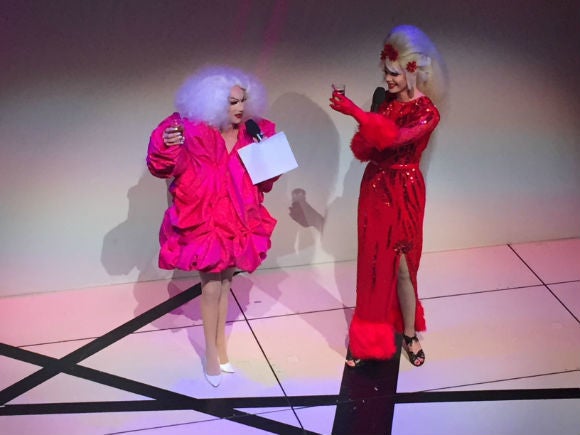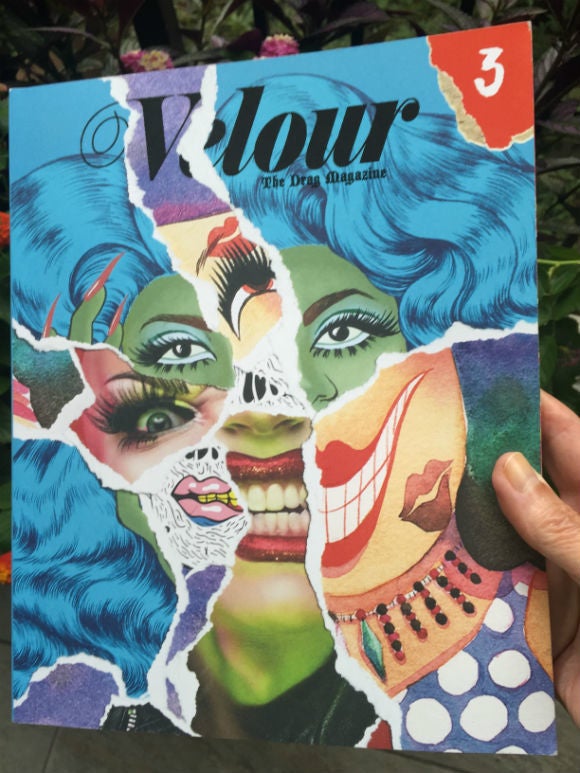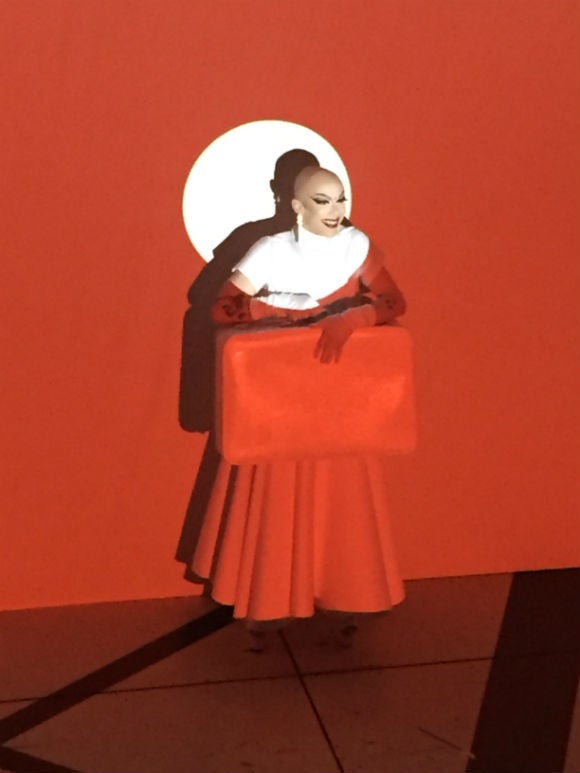
l to r: Sisters Charlene and Harry
I opened the email confirmation my kid Harry sent me for her* upcoming flight to Toronto and smiled. The ticket had been issued to “Sister” Harry James. I immediately flashed on Harry and her neighborhood bestie dressed up as nuns for Halloween 2002.
I was surprised Harry hadn’t chosen the name prefix “Mx” from Air Canada’s list of options. (Mx is the gender-neutral equivalent of “Mr” or “Ms” and the obvious option for non-binary people, like Harry.) For fun, when booking travel for the two of us in the past, I’ve chosen the title Doctor or Rabbi for Harry. So I thought she was just playing along. But I soon realized it was I who had overlooked the obvious.
A few days after sending me her passenger info, Harry took me to see the monthly sell-out drag show, “Nightgowns,” curated, produced and hosted by Sasha Velour, winner of “RuPaul’s Drag Race,” Season 9. In addition to her recent celebrity as American’s Drag Superstar, Sasha is also creative director of “Velour: The Drag Magazine” and a notable queer Brooklyn-based artist. Let me just say this about Sasha and me: She is a remarkable human being, and I am a huge fan.
It was at “Nightgowns,” in an onstage introductory convo between Sasha Velour and her co-host Olive d’Nightlife, that I came to understand what I thought might be the true meaning of “Sister Harry.”

l to r: Sasha Velour and Olive d’Nightlife
Cocktails in hand, Olive raised her glass to celebrate the beautiful third edition of Velour. “And now we must toast to the theme of this magazine,” she said. “Sisters and sisterhoods, those that you’re born into and those that we get to create.”
“Especially the ones we get to create using our fabulous queer sensibilities,” Sasha replied. “To all of our families that nourish us and create us.”
I felt a tingling sensation run from my scalp to my fingertips. And as the audience whooped and applauded, I was filled by the love in that space. I turned for a second to rub Harry’s arm. I knew in that moment that my kid was part of a big and powerful community, a family that would always be there for her even when her born-into family wasn’t close by. I understood Harry referring to her friends Charlene and Lucy, among others, as sisters. And I felt I knew Sister Harry a little bit better, too.
Lastly, Sasha and Olive toasted to drag, to all the kinds of drag. And according to Sasha, the more different the types of drag the better. She gave props to drag kings, drag queens, trans performers, non-binary artists, lady queens, and trans lady queens. Then she challenged us to think of other kinds of drag. “The future of drag is not complete without all of us,” she said. “We will not rest until drag beauty is everywhere.”
Inspired by the sisterhood of drag performers, I couldn’t wait to devour every page of “Velour #3.” When I’d finished, the magazine was filled with dozens of pastel-colored sticky tabs marking passages that had taught me something new or made me think hard about what it means to be a creative person with “fabulous queer sensibilities” and identify as a drag sister.

In the editor’s letter, co-written by Sasha and Olive, Sasha describes drag as a showcase for how beautiful, glamorous, funny and emotional it can be to live free from strict gender roles, or binaries. My eyes brimmed reading that, because I had witnessed that same beauty, humor and joy in Harry as a toddler. Whether dancing in a bridal gown she’d created with a roll of toilet paper at age 2, twirling a tulle skirt in the kindergarten drama corner, or layering pieces from her own dress-up box, my little drag-queen-in-the-making’s heart was filled with pure joy – the joy that I have since come to recognize as the purpose of life. That innate happiness is effortless for children who are given the freedom to express their inner selves fully and openly. And I know that joy can be tapped at any age.
Reading the “Sister” issue of Velour confirmed what I already knew to be true: drag queens are insightful and intuitive uplifters. They represent the creative spirit in all of us to project our creativity and inner beauty outward, for all to enjoy.

Sasha Velour’s lip-sync to Edith Piaf’s “No Regrets”
I’m grateful that Sister Harry – and her drag persona Sister Amber Alert – have their close-knit drag sisterhood. I know they are cared for, protected and safe within that big, fun family.
If you’re the parent or family member of an up-and-coming young drag queen, someone possibly still in kindergarten or middle school, please know that your child has a sisterhood of love and support waiting that will never let them down.
*Note: Harry told me recently that I can use any pronoun I want when referring to him. “Mom, I just don’t care!” So I often use he/him/his and she/her/hers interchangeably. Because this post is about sisterhood, I’ve chosen “she/her/hers.”
________________
You can read more from Julie on her website My Son Wears Heels, and also follow her on Facebook , Twitter and Instagram.
